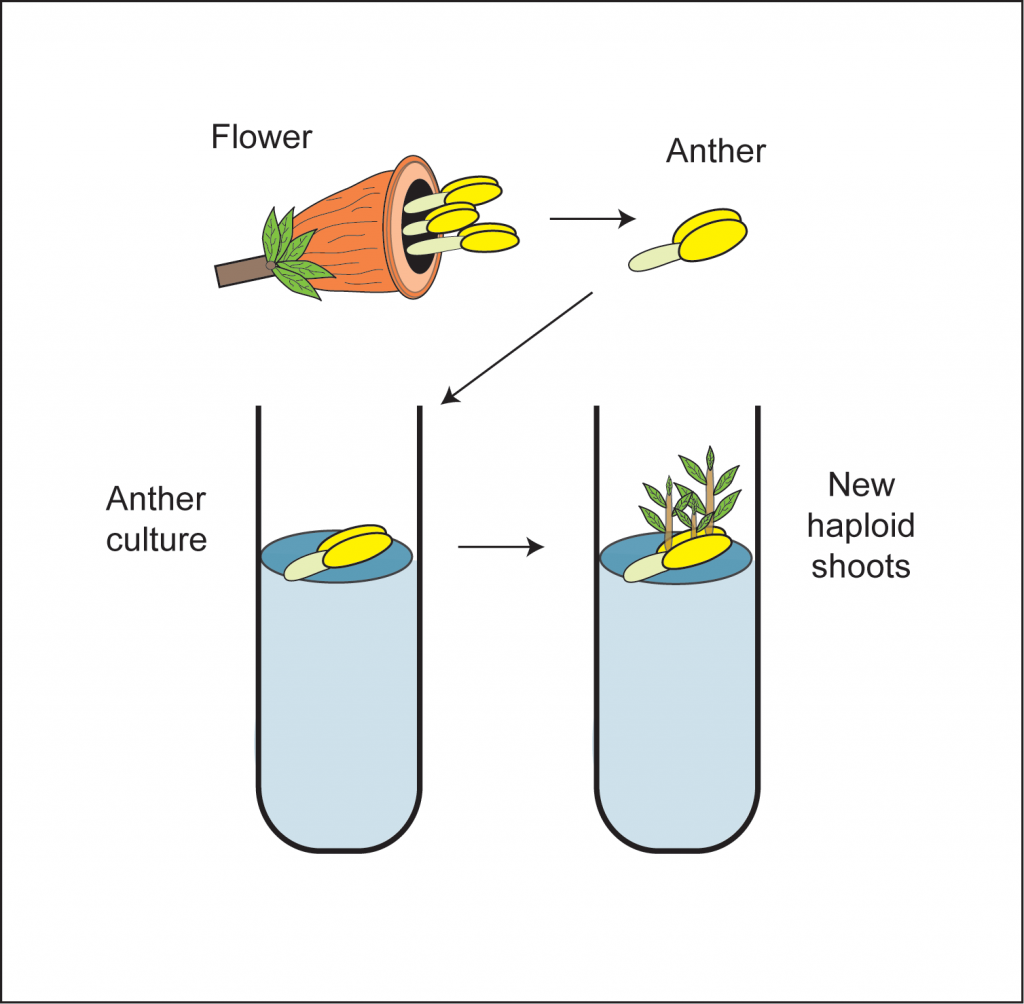Change in Number
One of the major type o chromosome mutation is change in chromosome number. There are two types of numerical changes (1) Euploidy and (2)Aneuploidy
1. Euploidy: (eu = true, ploidy = set of chromosomes)
The number of chromosomes in a basic set is called the monoploid number (x). Organisms with multiples of the monoploid number of chromosomes are called euploid.
Polyploid
Euploid types that have more than two sets of chromosomes are called polylpoid.
Thus 1x is monoploid, 2x is diploid, and the polyploid types are 3x (triploid), 4x (tetraploid), 5x (pentaploid), 6x (hexaploid), and so on.
Haploid Number and Monoploid
The haploid number (n), which we have already used extensively, refers strictly to the number of chromosomes in gametes. In most animals and many plants, the haploid number and monoploid number are the same.
However, in certain plants such as modern wheat, n and x are different.
Wheat has 42 chromosomes, but it is a hexaploid, with six rather similar but not identical sets of seven chromosomes. Hence, 6x = 42 and x = 7. However, the gametes of wheat contain 21 chrmosomes, so n = 21 and 2n = 42.
1- (i) Monoploidy:
Conditions in which single set of chromosome is present in an organism. The organism with single basic set of chromosomes is called as monoploids.
Male bees (drones), wasps and ants are monoploids. Males develop parthenogenetically—that is, they develop from unfertilized eggs.

In most other species, however, monoploid zygotes fail to develop.
The reason is that virtually all individuals in a diploid species carry a number of deleterious recessive mutations, together called a “genetic load.” The deleterious recessive alleles are masked by wild-type alleles in the diploid condition, but are automatically expressed in a monoploid derived from a diploid. Monoploids that do develop to advanced stages are abnormal.
If they survive to adulthood, their germ cells cannot proceed through meiosis normally because the chromosomes have no pairing partners. Thus, monoploids are characteristically sterile.
Monoploidy and plant breeding:
Monoploids play a major role in modern approaches to plant breeding. In some plants, monoploids may be artificially derived from the products of meiosis in the plant’s anthers. A cell destined to become a pollen grain may instead be induced by cold treatment to grow into an employed, a small dividing mass of cells. The embryoid may be grown on agar to form a monoploid plantlet which can then be potted in soil and allowed to mature.

Fig: Anther culcture and development of monoploid plants
Plant monoploids may be exploited in several ways.
In one, they are first examined for favourable traits, which may arise from heterozygosity already present in the parent or induced in the parent by mutagens.
The monoploid can then be subjected to chromosome doubling to achieve a completely homozygous diploid with a normal meiosis, capable of providing seeds.
This is achieved by application of a compound called colchicine to meristematic tissues.